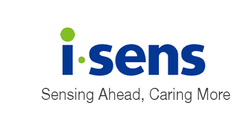
Diabetes Tests
Type 2 diabetes mellitus (T2DM) is the most common type of diabetes marked by persistently high blood glucose levels (ie, hyperglycemia).1 T2DM is characterized by insulin resistance and non-autoimmune loss of pancreatic b-cell insulin secretion.
Diabetes can be diagnosed using tests that measure the body’s response to the presence or absence of glucose.1 The diagnostic tests approved for diabetes include the following: fasting plasma glucose value, 2-hour glucose value during a 75-g oral glucose tolerance test, hemoglobin A1C criteria, or random glucose value with either hyperglycemic crises or hyperglycemic symptoms. In the absence of hyperglycemic crises, diagnosis of diabetes requires two abnormal test results (eg, fasting plasma glucose and hemoglobin A1C) at the same time or abnormal test results for one test, at two different times.
|
Criteria for Diagnosis of Diabetes in Nonpregnant Adults |
|
|
Fasting plasma glucose |
>125 mg/dL, or |
|
2-hour plasma glucose |
>200 mg/dL, or |
|
Hemoglobin A1C |
>6.5%, or |
|
Random plasma glucose with classic symptoms of hyperglycemia or hyperglycemic crisis |
>200 mg/dL |
1) Fasting Plasma Glucose Test
Fasting plasma glucose (FPG) levels are measured after 8 hours of fasting (ie, no caloric intake).1 A health care professional will draw blood from a vein, and fasting blood glucose levels will be measured.2
Impaired or abnormal fasting plasma glucose value signifies that the body experiences hyperglycemia even in the absence of caloric consumption when blood glucose levels should normally be low.3 Studies indicate that impaired fasting glucose (IFG) is attributed to decline in pancreatic b-cell function (responsible for insulin secretion), reduced insulin sensitivity of the liver (reduced responsiveness to insulin to take up glucose), and inappropriately elevated glucagon secretion (a hormone that signals that glucose should be synthesized).
Normal FPG measures below 100 mg/dL, usually ranging between 80-90 mg/dL.1 Individuals with FPG levels measuring between 100 mg/dL to 125 mg/dL are noted to have IFG and are diagnosed with prediabetes. When FPG measures above 125 mg/dL, diabetes is diagnosed.
|
Fasting Plasma Glucose |
|
|
Result |
Fasting plasma glucose (mg/dL) |
|
Normoglycemia |
<100 mg/dL |
|
Prediabetes |
100-125 mg/dL |
|
Diabetes |
>125 mg/dL |
2) Oral Glucose Tolerance Test
Glucose tolerance test using the oral glucose tolerance test (OGTT) is performed to determine whether glucose can be used and stored properly.1,4 Individuals will be asked to fast overnight for at least 8 hours before taking the test, then a health care professional will draw blood to measure the fasting glucose levels. A 75 g oral glucose drink will be given, then blood draws will be taken again 1 hour and 2 hours after the drink.
Impaired or abnormal glucose tolerance signifies that the body is unable to correctly respond to rising levels of glucose in the blood.5 It often tells that there are two different defects: impaired insulin secretion and insulin resistance. Pancreatic b-cell dysfunction can hinder appropriate secretion of insulin in response to rising blood glucose levels. Additionally, decreased sensitivity of various tissues to insulin caused by insulin resistance can hinder uptake of glucose into cells.
Normal plasma glucose level is under 140 mg/dL after 2 hours of drinking a glucose solution.1 Individuals with a 2-hour plasma glucose level between 140 mg/dL – 199 mg/dL during a 2-hour 75 g OGTT is noted to have impaired glucose tolerance and is diagnosed with prediabetes. When the 2-hour 75 g OGTT plasma glucose levels meet or exceed 200 mg/dL, diabetes is diagnosed.
|
OGTT |
|
|
Result |
2-hour plasma glucose (mg/dL) |
|
Normoglycemia |
<140 mg/dL |
|
Prediabetes |
140-199 mg/dL |
|
Diabetes |
>200 mg/dL |
3) A1C Test
Hemoglobin is well known as the iron-containing metalloprotein found in red blood cells that helps transport oxygen in the body.6 Hemoglobin A1C (A1C) is hemoglobin that has become glycosylated, or coated with glucose, in the presence of elevated intracellular glucose levels.7
The A1C test reflects the average glycemia over approximately 3 months and is used as the primary tool for assessing glycemic control and as a strong predictor of future diabetic complications.8 Along with FPG levels and OGTT, the A1C test can be used to diagnose diabetes.9 Individuals with normoglycemia have A1C levels below 5.7%. Individuals with levels between 5.7% and 6.4% are diagnosed with prediabetes, and individuals with levels equal to or above 6.5% are diagnosed with diabetes.
|
References: |
(Disclaimer)
The content of this article is intended to provide a general information and knowledge on the subject matter. The views expressed in newsletters, articles, and blogs in the i-SENS USA website are not necessarily those of i-SENS Incorporated, i-SENS USA Incorporated or our publishers. Medical or nutritional information on i-SENS USA website is not intended to replace professional medical advice – you should always consult a specialist with any questions about your specific circumstances.





Add a comment